|
|
In the beginning, there was the triode. Even back in the ‘30s, single-ended and push-pull amplifiers using these three-element tubes were considered to have very good audio quality, though their power output was usually limited, Output tubes having more elements, such as four-element tetrodes (beam-power tubes) and five-element pentodes, could produce greater power output but with greater and more irritating kinds of distortion. (For the sake of brevity, I’ll lump beam-power tubes together with pentodes from here on.)
A great debate raged in the ‘40s and ‘50s about the relative sonic merits of triode and pentode power amps. In the midst of this de bate, in 1947, this magazine was born. I remember being impressed with the sophistication of many construction articles and circuit descriptions in its early issues; some of these amplifiers would probably sound very good today.
The Williamson amplifier circuit came into being about the same time as Audio. It had triode-connected pentodes for output tubes (807s, if my memory serves me) and required an extraordinarily good output transformer to perform properly with the 20 dB of feedback it used. Many spinoffs of this circuit, most not as stable and well behaved as the original, appeared over the next 10 to 15 years.
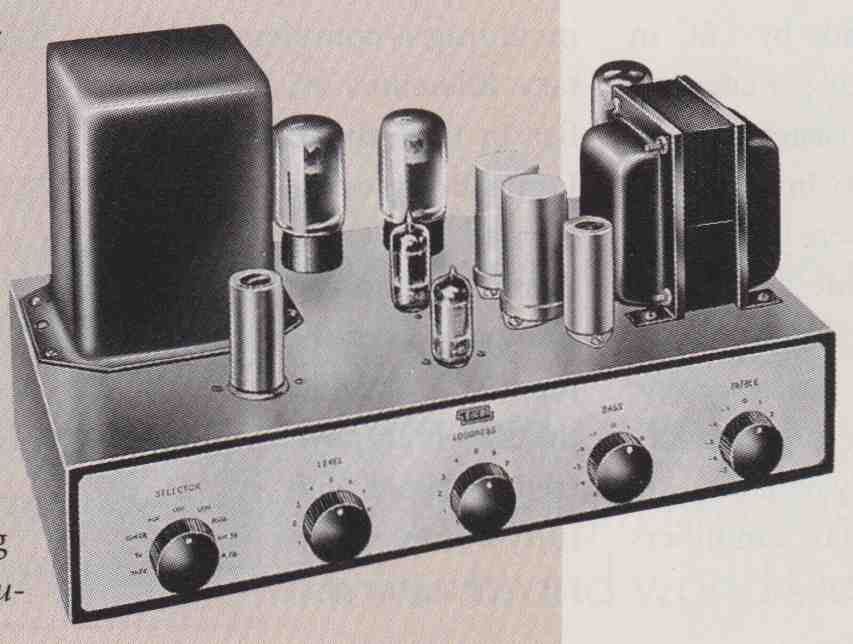
ABOVE - Eico, another kit maker, also used the Williamson design.

ABOVE - Another Eico (Model HF-81), this time from 1959, also discussed
in Stereophile.
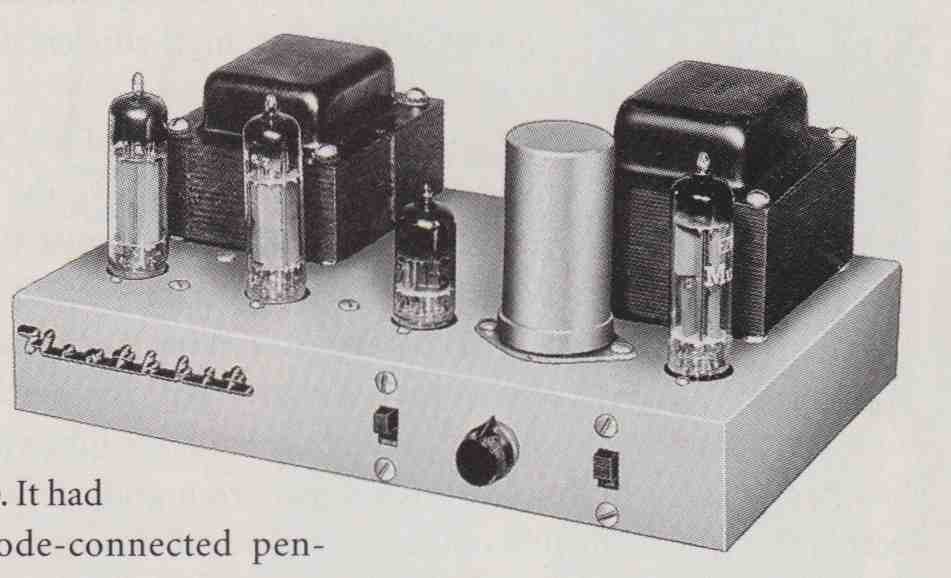
ABOVE - Williamson amplifier, like this Heathkit, had triode-connected pentode
output tubes.
Several developments in the ‘50s made the use of pentode power tubes more acceptable sonically. The first of these, the McIntosh circuit, was introduced in 1950 in a professional 50-watt amp. Its pentode output tubes were connected in a new way, termed unity coupling, which split the load evenly between the plate and cathode circuits; the wires from the plate and cathode in the output transformer’s primary were wound together in what is known as quadrifilar winding, for closer coupling between the two halves of the push-pull output stage. This allowed the output stage to draw less power when idling than conventional output stages yet still avoid high-frequency switching transients (which would otherwise occur at the waveform’s zero crossings under this near-Class-B condition). The result was an amplifier having high power output, high efficiency, and low distortion.
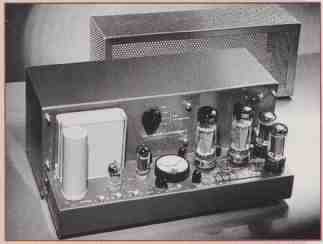
ABOVE - The Marantz :Model 2 delivered 40 watts in Ultra Linear mode or 20
watts in triode mode selected by a toggle switch near the output tubes
The Ultra-Linear circuit, of 1952, offered another way to improve the performance of pentode output stages. Before this, a pentode output tube’s screen grids had been connected either to the output transformer’s center tap (for pentode mode operation) or to the same transformer tap as the tube’s plates (for triode mode). In this new circuit, the screen grids were connected to a point about 40% of the way between the center tap and the plate connection; this gave the output stage most of the power of pentode mode, together with the lower distortion and lower out put impedance of triode mode. Many, if not most, subsequent tube amplifiers had this kind of output stage. The first commercial amplifiers taking this approach were made by Acrosound, but the most popular Ultra-Linear amplifiers were the various Dynaco and Dynakit models, probably the best-selling tube amps ever. Some of the most highly regarded Ultra-Linear amplifiers of the era were the Marantz Models 8B and 9 (the latter switchable between triode and Ultra-Linear operation), designed by Sidney Smith; they are still coveted today.
In the middle to late ‘50s, a new form of amplifying device, the transistor, was reaching commercial viability. The first commercial transistor amplifier was a little integrated unit made by TEC in 1956. It was small and cute and put out some 15 watts per channel. These early solid-state amps used germanium transistors, which were not terribly reliable. They also tended to be noisy in the small- signal versions used for amplifiers’ early stages and were leaky, fragile, and very slow in the large-signal versions made for output stages. Faster and more linear germanium power transistors did appear, such as RCA’s drift-field and Delco’s Nu-Base devices. Some of the amplifiers made with them were pretty good, but reliability still remained a problem. Silicon transistors gradually replaced germanium, and by the mid-’60s, virtually all solid-state amplifiers were using them.
Up to the early ‘70s, most solid-state amplifiers had quasi-complementary output stages. These were push-pull circuits that used power transistors of the same polarity (usually NPN), because good complementary devices of opposite polarities weren’t available. Half of the push-pull stage used a compound connection to provide a more or less complementary match for the other half, a Darlington connection of two series-connected emitter followers. When truly complementary NPN and PNP high-power output transistors became available, JBL introduced its T-circuit power amplifiers. Designed by Bart Locanthi, they had triple Darlington complementary output stages. Another good complementary out put stage could be found in Marantz’s Model 15 and subsequent designs. And the Hadley 622, of roughly the same era, was the first all-silicon amp to have a full-bridge output stage.
Transistor amplifiers gradually became more powerful. One of the first high-power models was the Crown DC-300, introduced in 1967, which was rated at 150 watts per channel into 8 ohms. This was the first truly direct-coupled amp, with identical DC and AC gain. In 1972 came an amp that delivered 350 watts per channel into 8-ohm loads. That was the Phase Linear 700, an early and notable de sign from Bob Carver.
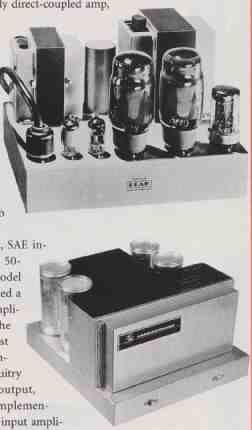
ABOVE - In the ‘60s, the English company Leak proudly named its amps “Point
One” for their low, 0.1%, distortion. The well-the first high-powered amplifier
with fully complementary circuitry that regarded C/M Laboratories solid-state
amp, which came a few years later in the decade, was far more modern looking.
In early 1973, SAE introduced the 50- watt/channel Model 31B, which started a new trend in amplifier design. The 31B was the first to use fully complementary circuitry from input to output, including a complementary differential input amplifier. In 1974, the 31B’s designer, James Bongiorno, formed The Great American Sound Company, where he produced Ampzilla, could be assembled from a kit. (Bongiorno later founded Sumo, as well.) Fully complementary circuitry has been used in many subsequent solid-state de signs, right up to the present day.
Other circuits and devices helped improve the sound of solid-state amps during the last two decades. Cascode connection yielded amplifier stages with reduced input capacitance, wider band width, greater linearity, and higher gain. Class-A output stages were joined by more efficient quasi-Class-A designs, including those with sliding bias. Many amps now use little or no global feed back. More and more output stages were designed with high current capability. Better passive components became available, as did improved active de vices, such as MOS-FETs and insulated gate bipolar transistors (which combine I FET inputs with bipolar outputs).
During the late ‘70s, Infinity produced a Class-D, or switching, amp; Sony introduced one soon after. Switching amps have great efficiency because they treat the signal as a chain of full-amplitude pulses, altering the audio output’s amplitude by changing the pulses’ duty cycle. John Ulrich, one of the principal designers of the original Infinity amplifier, currently makes a very good-sounding high-power switching amplifier under the Spectron name. Infinity gave up on switching amps for a long time but has recently been making them for car stereo; others offer Class-D car amps, too.
Another technique to enhance efficiency, output-stage power supplies with multi-tiered supply rails, appeared at about this time. In multi-tier designs, the voltage to the output transistors is switched up or down to meet the demands of the signal; examples include Class-G and Class-H designs and Carver’s Magnetic Field Amplifiers (his 6¼-inch cube, which could produce 200 watts per channel, is shown below). More recent designs from Carver’s fertile mind use modulated switching power supplies that continuously track the output voltage. This keeps the supply voltage across the output transistors low and constant, yielding high efficiency.
Transistor amps have always had better steady-state measurements and higher power than tube amps. Nevertheless, many listeners in the late ‘60s and early ‘70s felt that transistor amplifiers didn’t sound as musically satisfying as most tube designs. My own experience through this period, as a designer and later as a reviewer for Audio, bore this out. To day, most critics would probably agree that the current high-performance solid-state amplifiers are musically satisfying and realistic. Despite my special fondness for the sound of good tube amps, I have certainly found this to be true.
Yet a tube resurgence has occurred in the last ten years, bringing this amp history full circle. Tube amps and - preamps be come more and more numerous each year. Recently there’s even been a trend toward single-ended designs, the predecessors of the more common push-pull amplifiers. Proponents claim that single-ended amps sound more lifelike and believable, although their low power makes them practical only for high-efficiency speakers. Even solid-state single-ended amps are available, notably those de signed by Nelson Pass of Pass Labs, whose topologies have been ingeniously modified to yield fairly high power while keeping down the even harmonics that raise the THD measurements of single- ended tube designs.
All in all, it’s been an interesting 50 years of amplifier development, and I feel privileged to have been a part of it for 35 of those years. May the next half century of audio bring even more interesting and exciting advances.

ABOVE - JBL’s T-circuit solid-state, high-power amp.
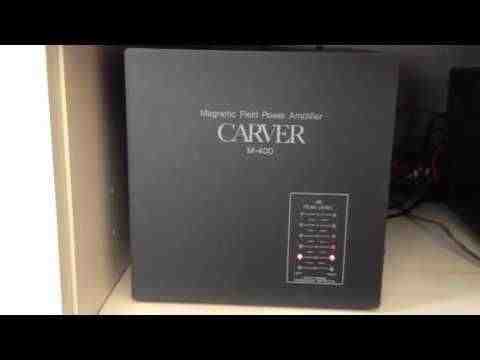

ABOVE - Carver’s Magnetic field Amplifier cube
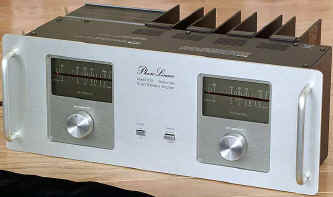
ABOVE - “Seven Hundred Watts R.M.S.” proclaimed the front panel of the Phase
Linear 700 the total for both channels of this extraordinarily powerful amp.
Adapted from Audio magazine (1947-2000). Classic Audio and Audio Engineering magazine issues are available for free download at the Internet Archive (archive.org, aka The Wayback Machine)